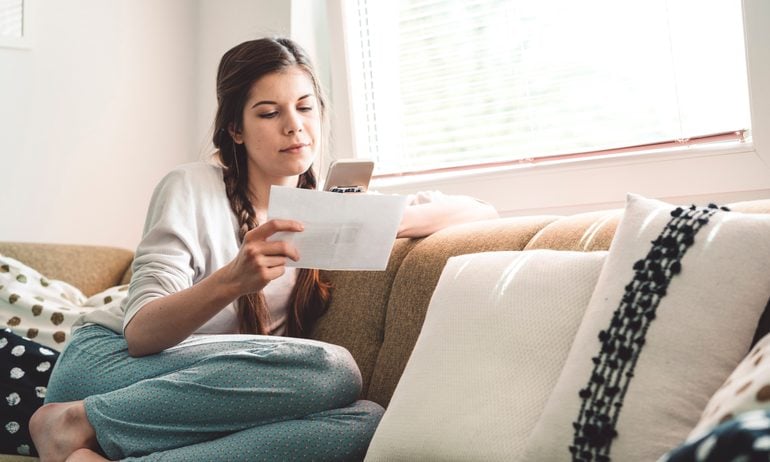What to Know Before Accepting COVID-19 Credit Card Relief
Issuers' assistance programs can provide breathing room, but they won't wipe out your debt. Know what to expect.

Many or all of the products on this page are from partners who compensate us when you click to or take an action on their website, but this does not influence our evaluations or ratings. Our opinions are our own.
As the COVID-19 pandemic results in job losses and financial hardship for millions of Americans, many credit card issuers are offering temporary relief, including waived late fees and minimum payment requirements for a couple of months.
But you'll likely have to apply for help first, and accepting aid comes with some caveats. Here's what to know if you take your issuer up on an offer.
1. Relief isn't automatic or instant
While some relief for COVID-19 hardship is automatic — for example, limits on foreclosures that apply to all federally backed mortgages — credit card relief typically isn't. In part, that's because federal regulators aren't requiring issuers to offer relief to all cardholders.
To get certain assistance, you'll need to contact your issuer. In many cases, that means calling customer service and staying on hold for a long time. But many major issuers now allow you to apply for relief online, rather than calling, which is much faster — although you might still need to wait a week or longer for your issuer to respond to submitted requests.
2. Relief is short-term
Issuers' COVID-19 hardship programs offer short-term help, not long-term help. They generally won't permanently lower your interest rates, payments or debt obligations, but they might offer some relief for a few months. Some examples:
Citi will waive late fees and the requirement to make a minimum payment for two consecutive billing cycles for qualified cardholders.
Chase will refund late fees and waive the requirement to make a minimum payment for three monthly payments for qualified cardholders.
Bank of America® will refund late fees and allow payments to be deferred through June 15, 2020, for qualified consumer cardholders.
If you're facing more serious financial hardship and need longer-term help managing debt, consider nonprofit credit counseling.
3. Interest may still accrue
While some issuers might offer you a break on interest, many won't. Even if your issuer allows you to effectively skip minimum payments for a time, for instance, interest will generally continue to accrue at the usual rate. That means that even if you don't make any new purchases on that card, your balance will still increase. When you start paying again, that could make your future minimum payments larger.
If money is tight, accepting a credit card issuer's short-term forbearance can make sense, even if it means you'll owe more later. But if you can afford to make at least the minimum payments while meeting all your other financial obligations, it's generally better to do that and save on interest.
4. Issuers may lower your limit or close your account
In some cases, issuers may offer relief on the condition that they freeze your card, lower your limit or close your account. That could hamper your purchasing power at a time you might need it most.
To be sure, not all issuers will do this. Chase, for example, specifically notes in the terms and conditions for its COVID-19 relief program that "this program does not change how you can use your card, including your ability to make purchases." If you're unsure about what you're agreeing to and the terms are unclear, ask questions.
5. Autopay needs to be updated manually
Just because you're approved for COVID-19 credit card relief doesn't mean your issuer will change your autopay settings. Generally, if you have autopay set up, you'll have to go in and update the preferences yourself.
If you want to take advantage of your issuer's offer to defer minimum payments for a time, consider turning autopay off to avoid overdrawing your bank account. Alternatively, if your issuer is setting your minimum payment to $0 for the next couple of billing cycles, you could also change your autopay so you're paying just the minimum due, rather than the full amount.
6. Credit protection for COVID-19 is limited
Ultimately, when you're facing a financial emergency, credit scores are a low priority. But it's worth noting that when you accept COVID-19 credit card relief, you'll get only limited credit protection. If you live up to your end of the agreement, the issuer is required to report your account as current, unless it was delinquent previously. If it was already delinquent, it can be reported as delinquent until you bring it current.
And that's to say nothing of all the other factors that may affect your credit scores. If you're not paying the minimums on your cards and you're still spending, for example, your credit utilization ratio — the percentage of available credit you're using — will still increase. That could also lower your credit scores.
7. If you get relief now, you may not be eligible later
While credit card issuers are generally willing to work with customers experiencing financial hardship — after all, they don't want people defaulting en masse — there's generally a limit to how much help they're willing to give. If you claim COVID-19 credit card relief now, you might not be able to claim it a second time.
If you're financially squeezed and don't think you'll be able to make your minimum payment, taking the relief now makes sense. But if you're financially stable, consider holding off in case you need help later on.
Find the right credit card for you.
Whether you want to pay less interest or earn more rewards, the right card's out there. Just answer a few questions and we'll narrow the search for you.

